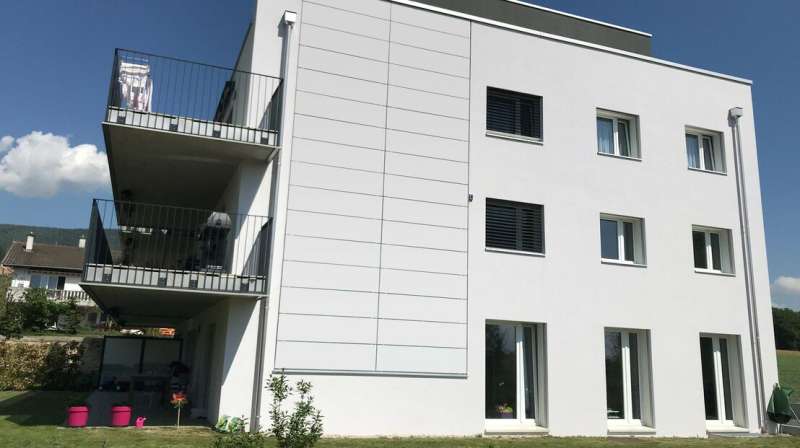Turning buildings into energy producers

Photovoltaics can be used directly in building and renovation projects and serve as a construction material in their own right. Integrating solar panels into facades and roofs can transform buildings into electricity producers and reduce CO2 emissions. To develop and promote this technology, Be-Smart project partners will design multifunctional solar panels that not only produce energy but also do the job of other building materials with insulating, soundproofing or aesthetic qualities. The project partners will also develop a methodology for architects and construction companies and find ways to drastically reduce the costs of BIPV.
Fifteen research institutes, innovative companies, and architecture and construction firms have teamed up for this challenging project, which is being led by EPFL and the CSEM in Neuchâtel. "The use of BIPV in facades and in the construction sector more broadly is expanding rapidly, thanks in part to the pioneering technology developed by EPFL and CSEM," says Laure-Emmanuelle Perret-Aebi, coordinator of the project at EPFL's Photovoltaics and Thin Film Electronics Laboratory (PV-Lab). "But we need to make this technology more accessible so that it can be used more extensively and not just in flagship building projects."
Greater uptake of the technology would considerably increase demand for photovoltaic facades, tiles and other construction materials, which would be a boon for Europe's manufacturing industry. "The technology is different from that used in solar panels, which are designed for mass production and now manufactured primarily in China," says Perret-Aebi. "But BIPV technology stands to boost European industry."
And this technology runs on solar energy – another of its major assets given recent progress in this area. "Solar energy produces 10 to 20 times less CO2 than conventional thermal power plants," says Christophe Ballif, a professor at EPFL's School of Engineering, the head of EPFL PV-Lab and the director of CSEM PV-center. "What's more, large solar farms are the cheapest way of producing electricity, even in countries that don't get a lot of sunlight, like Germany."
It is already possible to construct or renovate a building with BIPV. In Switzerland, more than 10,000 roofs have already been built in this way, with photovoltaic panels available in various shapes and colors. Yet there is still a lot of reluctance, and uptake of this technology is slow. While the use of BIPV does drive up construction costs, the extra expense is paid off in 10 to 30 years. And that's without making use of potential subsidies or selling back the electricity produced. Nor does it account for the reductions in CO2 emissions that can be achieved.
The photovoltaic technology used for this project is based on crystalline silicon, which is found in most solar panels. Since the panels need to have a guaranteed lifespan of 30 to 50 years if they are to be integrated into buildings, reliability is essential – and one of the project goals. At the moment, the energy payback period for a solar panel – i.e., the time needed for the panel to generate the same amount of energy used to make it – is between one and three years. According to the project partners, widespread use of this technology in facades and roofs could produce roughly the amount of energy currently consumed in Switzerland. "There is really no reason not to integrate photovoltaic panels into new buildings – it should be the norm," says Ballif.
Provided by Ecole Polytechnique Federale de Lausanne




















